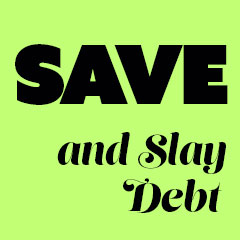Key takeaways
- A small business line of credit allows your business to pull funds as needed and only pay interest on the amount withdrawn
- Many lines of credit are unsecured, but secured lines of credit may be easier for businesses with bad credit or a limited financial history to qualify for
- Compare the features, such as its draw period, repayment terms, interest rates and fees before getting a business line of credit
A small business line of credit can help your business fund short-term expenses, putting working capital back into your business that you can use for operational costs. Similar to a credit card, businesses can access their line of credit when needed and only pay interest on the amount taken out.
But each lender has different features and terms for using the line of credit, which may or may not help your business. For example, some lenders charge draw fees when you make a withdrawal, which can add up if you expect to withdraw funds regularly.
You also want to consider the length of time you have to repay funds, any service or origination fees and the credit limit that you qualify for. When getting a business line of credit, be prepared to research each lender’s features, look up the requirements to apply and gather business documents before applying.
What is a business line of credit?
A line of credit functions like a credit card. Companies can access their line of credit when needed and only pay accrued interest on the amount taken out. Interest rates on business lines of credit are usually less than those of a business credit card. But unlike a credit card, you won’t have access to reward programs that come with many cards.
Business lines of credit are designed for managing cash flow and can be a good option for frequent, smaller expenses. You can continue to withdraw funds and repay what you borrow through the draw period, which may last one to five years. After you withdraw funds, you will then have a set timeline to repay the funds, such as six or 18 months. Many lines of credit also require you to renew the line of credit periodically for a fee or reapply for the business line of credit.
There are two types of business lines of credit: secured and unsecured. They have their own benefits and drawbacks, but the best choice largely depends on the assets your business has access to.
High-risk lines of credit
Bad credit business lines of credit are available for new businesses or business owners who don’t meet traditional lenders’ eligibility requirements. Lenders like OnDeck accept fair credit, but you will face significantly higher interest rates.
And instead of interest, some lenders may use factor rates to determine the cost of each draw. This is represented as a decimal, usually between 1.10 and 1.50, and is multiplied by the amount you borrow.
For instance, a draw of $10,000 with a factor rate of 1.20 will mean your business repays $12,000. This is equivalent to an interest rate between 35 to 36 percent.
For instance, a draw of $10,000 with a factor rate of 1.20 will mean your business repays $12,000. This is equivalent to an interest rate of between 10 to 40 percent, depending on the repayment term. Shorter repayment terms like six months have the highest interest rates. Factor rates aren’t common for business lines of credit but can increase borrowing costs when they’re used.
Bankrate insight
5 steps to get a business line of credit
After you determine how much funding you need — keeping in mind that lines of credit range from about $1,000 to over $1 million — you’ll need to research and apply for the right loan. Let’s look at the steps for how to get a business line of credit.
1. Decide between a secured and unsecured line of credit
Both secured and unsecured lines of credit can benefit a business. A secured line of credit is useful for business owners with valuable assets or business owners with less-than-ideal credit. By providing collateral, you may score a lower interest rate than you would get with an unsecured line of credit.
You may also be more likely to get approved for a loan with bad credit than with an unsecured line. Businesses with these profiles can use banks that may provide credit-builder line of credit options, such as Bank of America’s cash-secured line of credit.
The differences between secured and unsecured lines of credit:
| Secured line of credit | Unsecured line of credit |
|---|---|
| Collateral required | No collateral required |
| Less risk for a lender results in lower average rates | Higher risk for lenders but less risk for your business |
| May have access to a higher credit limit | Credit limit may be capped at $250,000 to $500,000 for qualified businesses |
| Eligibility criteria may be less strict with a valuable asset | May require more time in business and higher annual revenue |
Collateral reduces the risk for lenders, so secured lines of credit may have higher limits and lower interest rates than unsecured lines. Acceptable collateral includes a lien on your business, business equipment, real estate, stocks or certificates of deposit.
Because the risk is higher on an unsecured line of credit, lenders typically require a higher credit score — in the mid-600s or above — and a higher annual revenue.
2. Research lenders’ requirements for getting a business line of credit
All lenders set their own requirements for opening a new business line of credit, some more lenient than others. You’ll want to review the information the lender provides on its website or through representatives before you spend time applying for the loan.
Common areas that lenders look at when setting requirements include:
- Years in business: Most lenders want to see one to two years in business, though some lenders, like fintech lenders, will allow six months in business.
- Revenue and cash flow: Lenders want to see that you have a healthy flow of revenue and that you can handle making debt repayments. Lenders often set a minimum annual revenue, such as $100,000 to $250,000.
- Business and personal credit score: A business can have a business credit score showing how the business handles its finances, much like a personal credit score. Lenders may set a minimum business credit score that you must meet to be eligible. Many lenders also look at your personal credit score, often set at 600 or higher depending on the lender. Some online lenders accept a personal credit score of 500.
- Industry: Lenders may exclude some industries from getting a business loan, such as businesses in the cannabis industry. They may also tighten requirements or disqualify businesses in industries with a high failure rate, such as restaurants.
- Business plan: Some lenders may want to see your expected trajectory of growth through your business plan, including your forecasted revenue, marketing and goals. This helps them understand how you’ll handle paying back the business line of credit when you use your available credit.
3. Gather the required information
Your small business lender will likely want to see general information about the business, its owners and its finances. They’ll also want to know the loan amount you’re pursuing.
Required documents often include:
- Business licenses
- Articles of incorporation
- Personal and business bank statements
- Profit and loss statements
- Business plan
- Personal and business tax returns
- Information about other debt obligations
If you’re applying for a secured loan, you’ll also have to demonstrate your ability to provide collateral. Some lenders may require that owners sign a personal guarantee, regardless of whether the line is secured or unsecured.
4. Select a lender
Multiple types of lenders offer business lines of credit, including traditional banks, credit unions and online lenders. Online lenders and credit unions often have more flexible qualification requirements than traditional banks.
Before selecting a lender, it’s important to research potential lenders and compare features to be sure you’re getting the best option. Features to compare include:
- Maximum credit limits. The maximum amount you can borrow will depend on the lender, your credit score and the type of business line you apply for. The lender will set the maximum amount that it will lend to you during the application process.
- Draw periods. Be sure that you understand the terms of your line of credit, such as how long the available credit will remain open for you to withdraw funds.
- Repayment terms. Pay attention to how long you have to repay the loan once you withdraw funds. Repayment terms are typically short, such as six to 24 months.
- Requirements. It’s important to look at the requirements to be sure your business can meet them. Lenders typically want to see good personal credit and sufficient cash flow to cover repayment.
- Interest rates. Your business line of credit interest rate will depend on the lender and your creditworthiness. Typical rates could run anywhere from 8 percent to more than 60 percent.
- Associated fees. Compare the fees with each lender to ensure you’re getting the best possible deal. Some lines of credit will charge a draw fee when you withdraw money from it, while others charge a monthly service fee for keeping the line open. You may also pay an origination fee, which typically ranges from 1 percent to 3 percent of the loan amount.
- Reporting to credit bureaus. Most business lines of credit will report to the credit bureaus, helping you build business credit. But look in the fine print to be sure since some lenders may not report your payments.
Bankrate insight
The best business lines of credit will offer low interest rates, fast funding and minimal fees for withdrawing money or for monthly maintenance. Some of the top lenders to consider:
- Bluevine: Bluevine offers lines of credit and business checking accounts for your convenience. Lines of credit come with six- to 12-month repayment terms, and interest rates start at 7.80 percent simple interest. You do need at least $10,000 in monthly revenue to qualify for its six-month plan and $80,000 monthly if you want the 12-month repayment plan.
- Backd: Get high credit limits up to $750,000 if you qualify and receive funding within 24 hours. Backd requires just $100,000 in annual revenue and one year in business.
- Fundible: This lender works with bad credit borrowers and startups with just six months in business. You can receive funding within one day, and interest rates start at a low 6.00 percent simple interest. Keep in mind that this rate doesn’t include other loan fees.
5. Apply for a business line of credit
Once you’ve identified a lender that offers the type of line of credit you need, you can apply online, over the phone or in person, depending on their application requirements.
Make sure you’ve provided all the required documents. Also, confirm the details and numbers you’ve gathered before submitting.
If you work with an alternative lender, you may receive an approval decision and funding within a few days. Banks and credit unions tend to take longer, but they may be able to offer more competitive rates.
Business line of credit costs and fees
When getting a business line of credit, lenders charge fees and interest, both to open and to use your financing. A few common fees to watch for include:
- Draw fee. Many lenders charge a draw fee each time you tap into your line of credit, which could be anywhere from 1 percent to 4 percent of the amount you withdraw.
- Origination fee. Some lines of credit charge a fee for opening the credit line with the lender. This fee typically costs 1 percent to 3 percent of the principal loan amount.
- Payment processing fee. Some lenders charge a payment processing fee for the convenience of paying your bill online.
- Wire transfer fee. This fee, typically around $15, is charged each time you wire funds to your account.
- Late fee. If you miss a payment, you may be charged a late fee.
- Prepayment penalty. You may be charged a prepayment penalty if you repay your loan early. This fee is less common with lines of credit than with other types of business loans.
Bankrate insight
Is a business line of credit right for you?
You might get a business line of credit if you don’t need to borrow large amounts, such as needing $250,000 or less. It also works well if you would like access to credit that you can reuse again on an as-needed basis.
But if you’re borrowing for a specific purpose, like funding a business acquisition or buying equipment, you may want to look into other types of loans.
You could also choose to prequalify for a business line of credit and other loan types to see which loan offers you the best interest rates and terms. Prequalification allows you to see the loan offer without performing a hard check against your credit and impacting your credit score.
Alternatives to business lines of credit
If you decide a business line of credit isn’t for you, or you want to explore other ways to finance your business, consider these options:
- Business credit card: Similar to a line of credit, this is a revolving line of credit. You can spend up to your credit limit, which will replenish as you repay it. Business credit cards may come with additional benefits, such as an introductory APR or rewards, and you won’t pay interest if your balance is paid in full each month.
- Grants: Although competitive, grants are a great debt-free way to finance a business. Grants are available from federal, state and local organizations and don’t have to be repaid.
- Crowdfunding: These campaigns often offer rewards — such as products or gifts — in exchange for funds to help grow a business. While donation and reward-based options are the most popular, equity-based crowdfunding also exists. Most businesses will use a crowdfunding platform or service to run campaigns.
Bottom line
Getting a business line of credit is a great loan option for businesses. Companies can access their line of credit when needed and only pay accrued interest on the amount they use.
As with any financing, business lines of credit have associated costs and fees. Consider the cost — plus other features the lenders offer — before applying to ensure that the line of credit you choose is the right fit for your business.
Frequently asked questions
-
You may be able to find a line of credit — or other financing — with a lender that offers startup business loans. In general, most lines of credit require you to be in business for six months to a year or more. You can also consider a personal line of credit for startup expenses, but you’ll
-
On average, lenders have a minimum time in business requirement of six months to two years to qualify for any financing, including lines of credit.
-
Business lines of credit tend to be easier to qualify for than other types of business loans. But it depends on the lender you choose to work with and the type of line of credit your business needs. Online lenders and secured lines of credit are typically easier to qualify for.
Read the full article here






